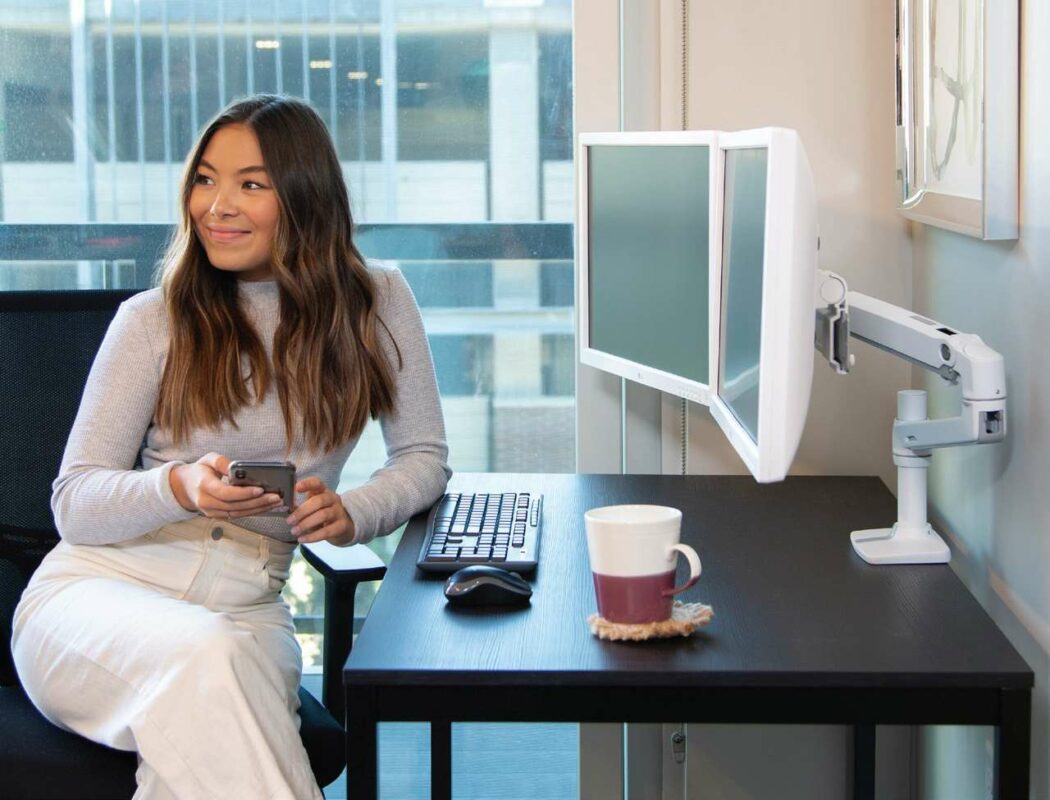
Chronic Stress and the Remote Worker
How movement can help lower stress and boost well-being
When business leaders sent their teams to work from home in the early days of the COVID-19 pandemic, most employees didn’t have a home office. Against the backdrop of a global health emergency, workers had to quickly determine how to create an adequate space to work at home without much time to plan or prepare.
To keep remote employees comfortable, healthy and productive for the long haul, it’s necessary that both employees and the leadership teams that support them take action. Living and working during a once-in-a-generation pandemic creates an undercurrent of chronic stress for many workers. Physical health, mental health and workday comfort must be prioritized as they all play a role in encouraging, or discouraging, well-being.
The Impact of Chronic Stress
Everyone experiences stress; it’s part of being human. Stress responses, like fight-or-flight reactions, are hard-wired in our nervous systems to protect us from potential threats and predators.
Chronic low-level stress is a different story. When people feel constantly anxious, stress hormone levels may remain elevated. This can result in irritability, sadness, anxiety, depression, digestive issues, headaches and insomnia. Stress may cause other problems that are harder to identify, such as inflammation and compromised immune function. Chronic stress can exacerbate conditions and lead to unhealthy behaviors. To put it simply, over time, chronic stress wears the body down.
Why Movement Matters for Physical and Mental Well-Being
It’s not surprising that workers are experiencing chronic stress as they navigate the unknowns of the pandemic. Unfortunately, in addition to chronic stress and associated symptoms, remote workers are also at risk for a common and well-documented health issue: inactivity.
Movement benefits our physical health, and research shows that it may positively impact our mental health, too. It’s important to note that determining how to best support one’s mental health is complex and individual needs vary widely; guidance from a qualified professional is recommended. But for some, simply moving more may help boost mental well-being.
Why does sitting less and moving more help mental wellness? Some data suggest that people who experience depressive symptoms may have a smaller hippocampus, the part of the brain that helps to regulate mood. Physical activity can support nerve cell growth in that region of the brain, which may help reduce feelings of depression.
Ideas to Keep You Moving While Working from Home:
- Move every 30 minutes. At the top and bottom of each hour, get up to refill your water, stretch or do a few laps around your home.
- Stand during meetings or conference calls. This is a simple way to remind yourself to stand throughout the day.
- Find an online stretching class. Take a break to relax and relieve tension. You can do many stretches right at your desk.
- Take a walk around the block. While you’re at it, call a friend you haven’t talked to recently or catch up on a favorite podcast.
- Turn on a favorite song and dance. From boosting brain power and improving heart health, dancing is excellent for your well-being.
Employees worldwide are facing heightened levels of stress, including chronic stress, as they adapt to changes in their work and personal lives. Moving more, sitting less and creating a comfortable home office setup can positively impact well-being, including physical health, mental health and spinal health. With frequent movement and a healthy workspace setup, employees are empowered to work in a comfortable way that supports their well-being now and in the future.
Are you interested in creating an ergonomic workstation but aren’t sure where to start? Contact Yeo & Yeo Technology today to speak with our ergonomics specialist.
Information used in this article was provided by our partners at Ergotron.
